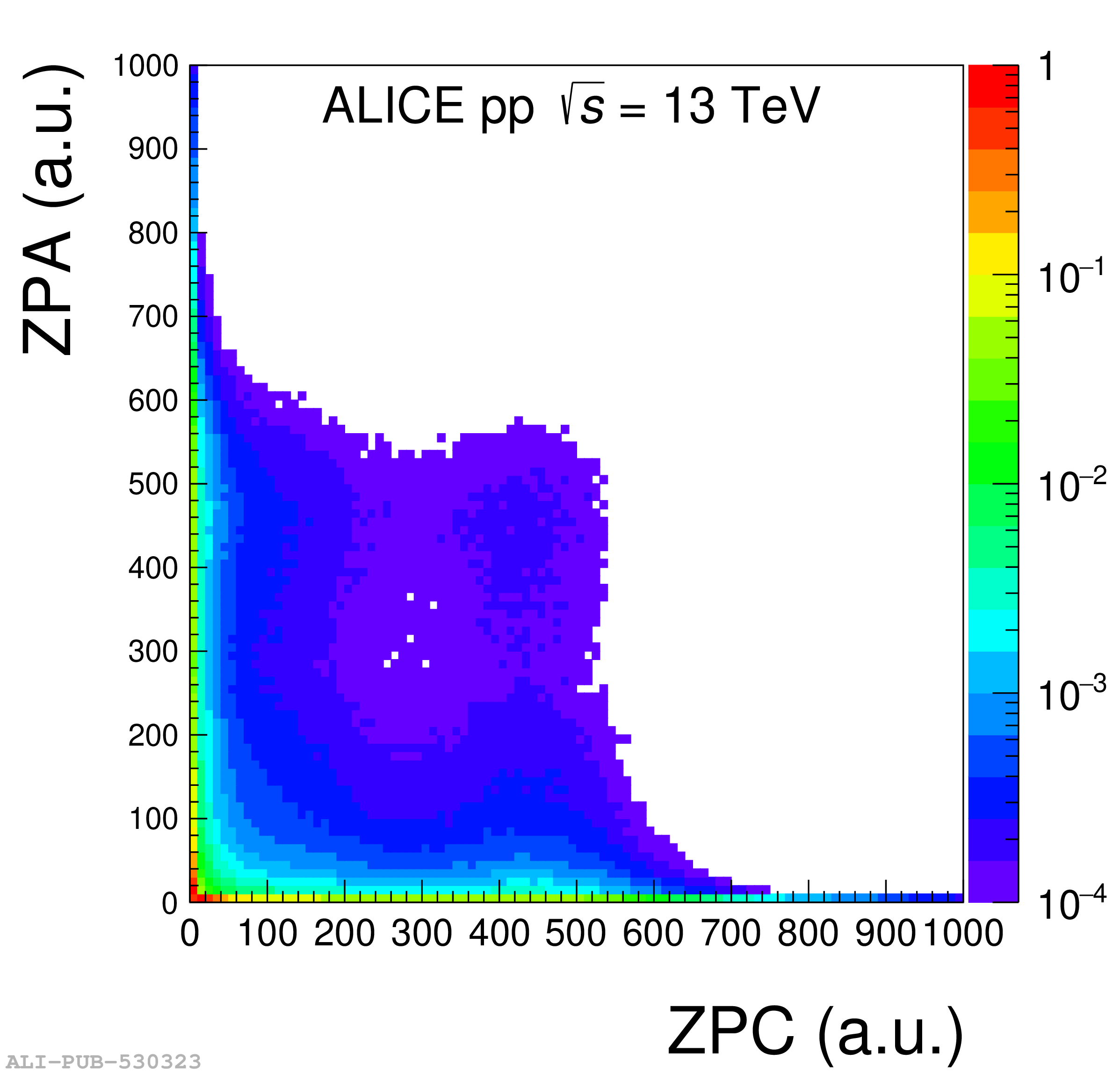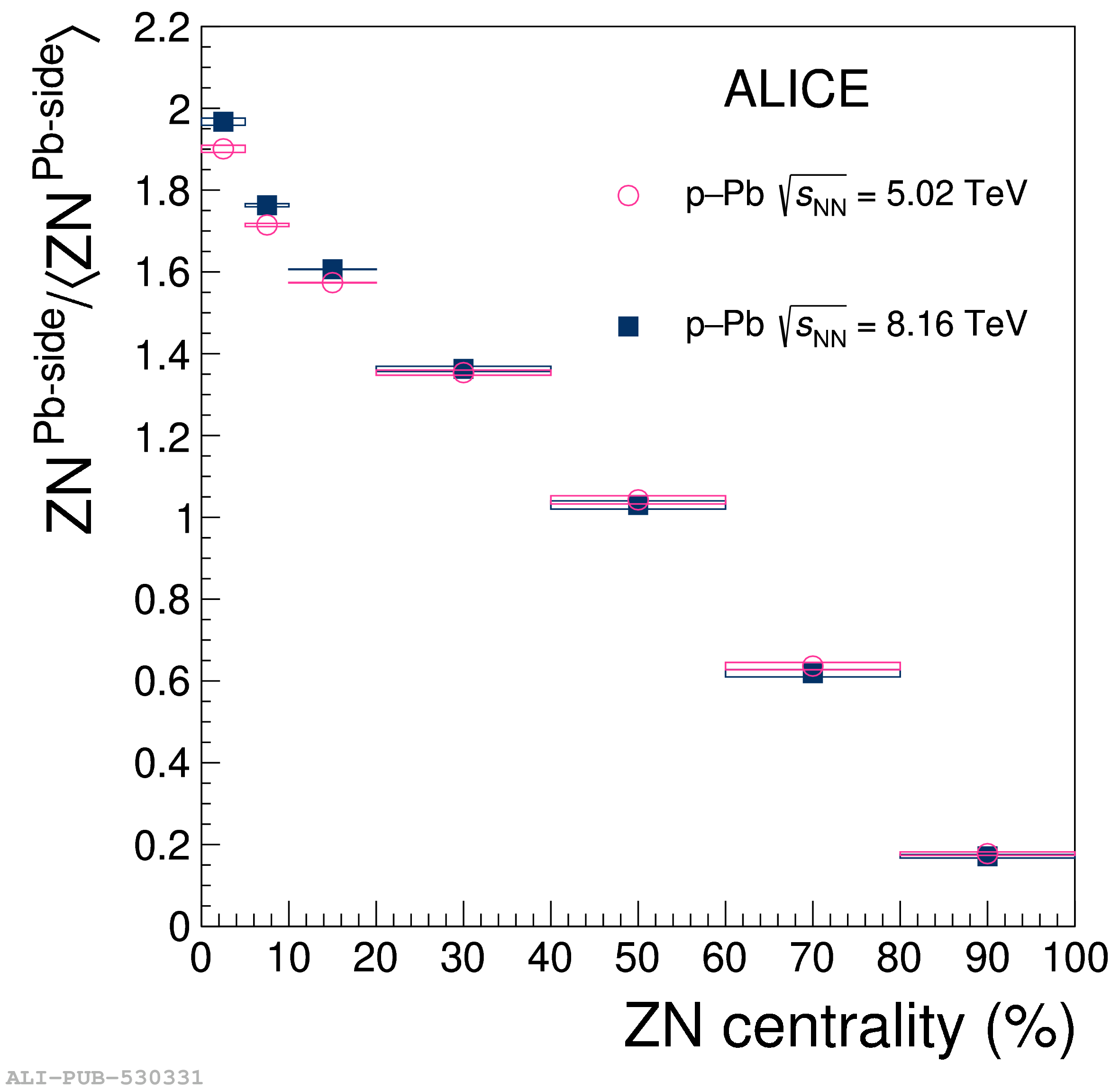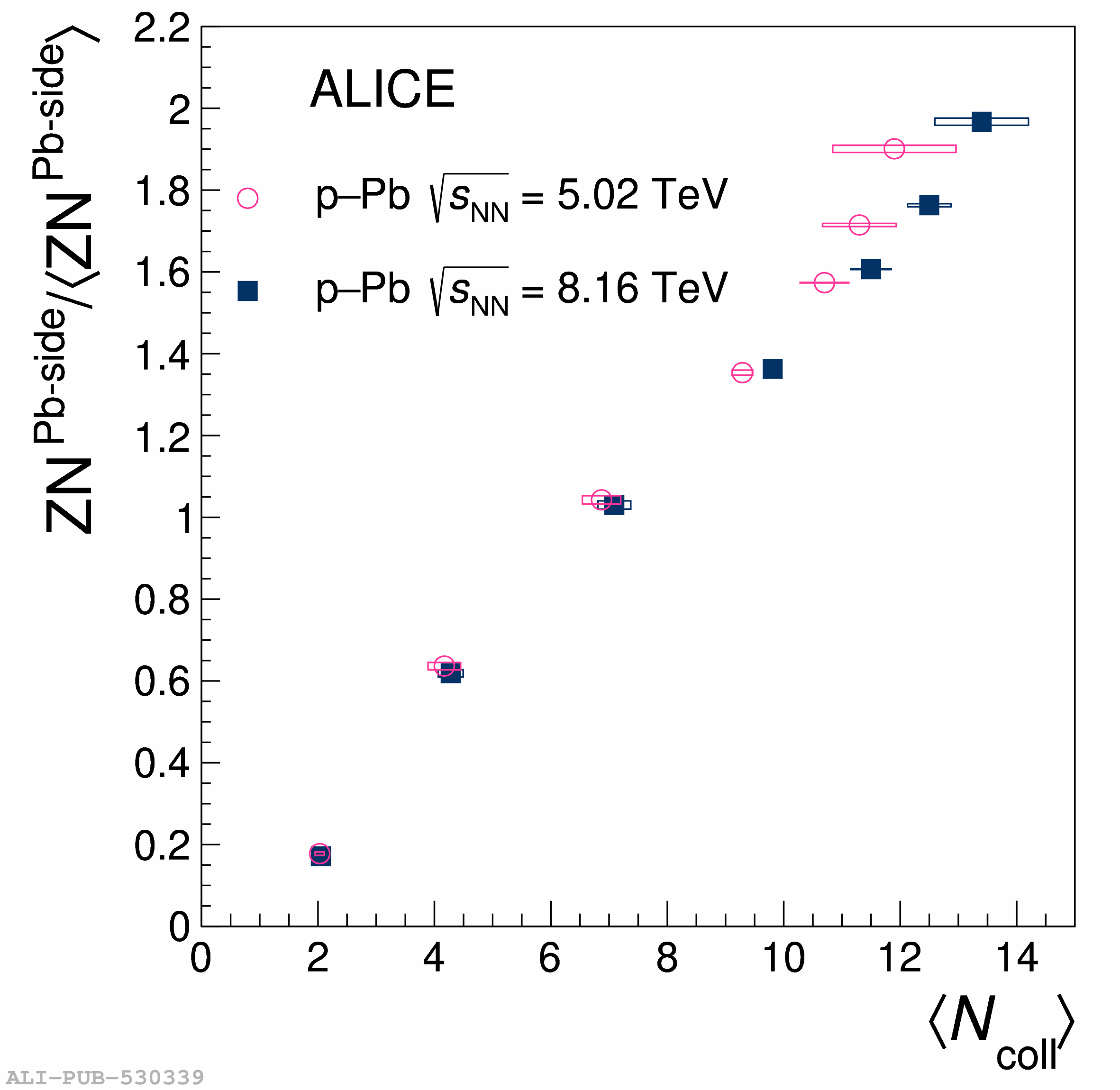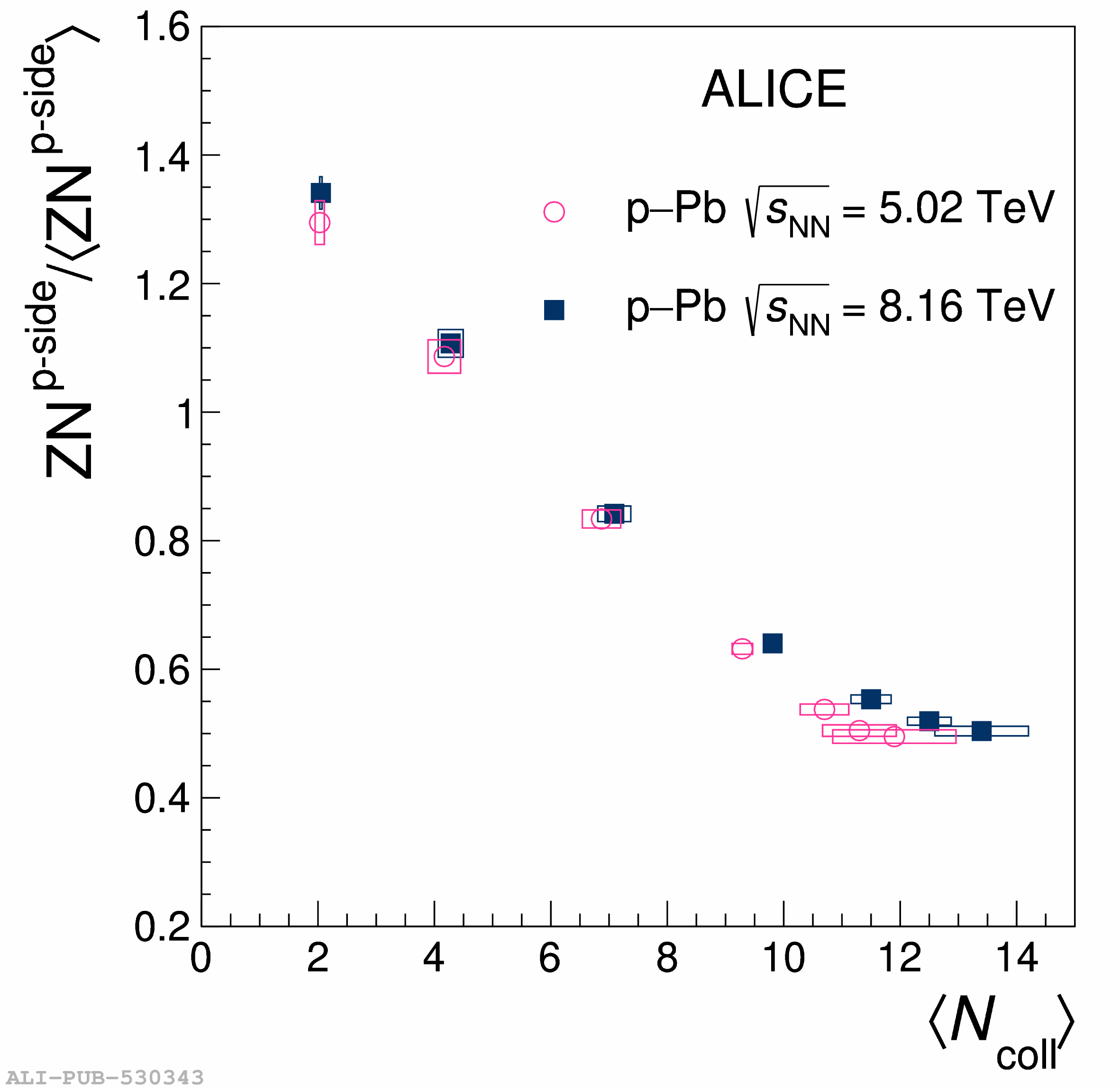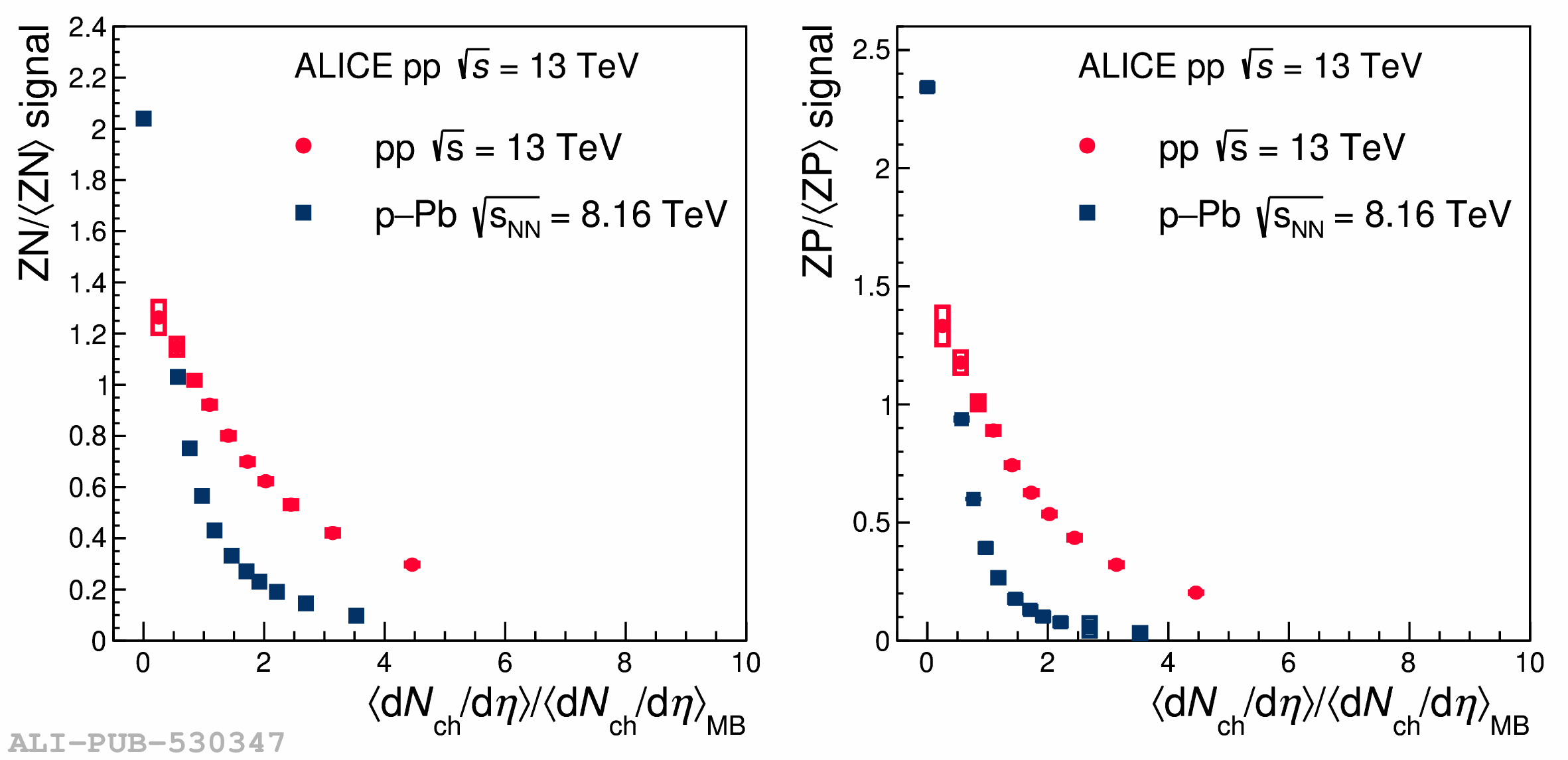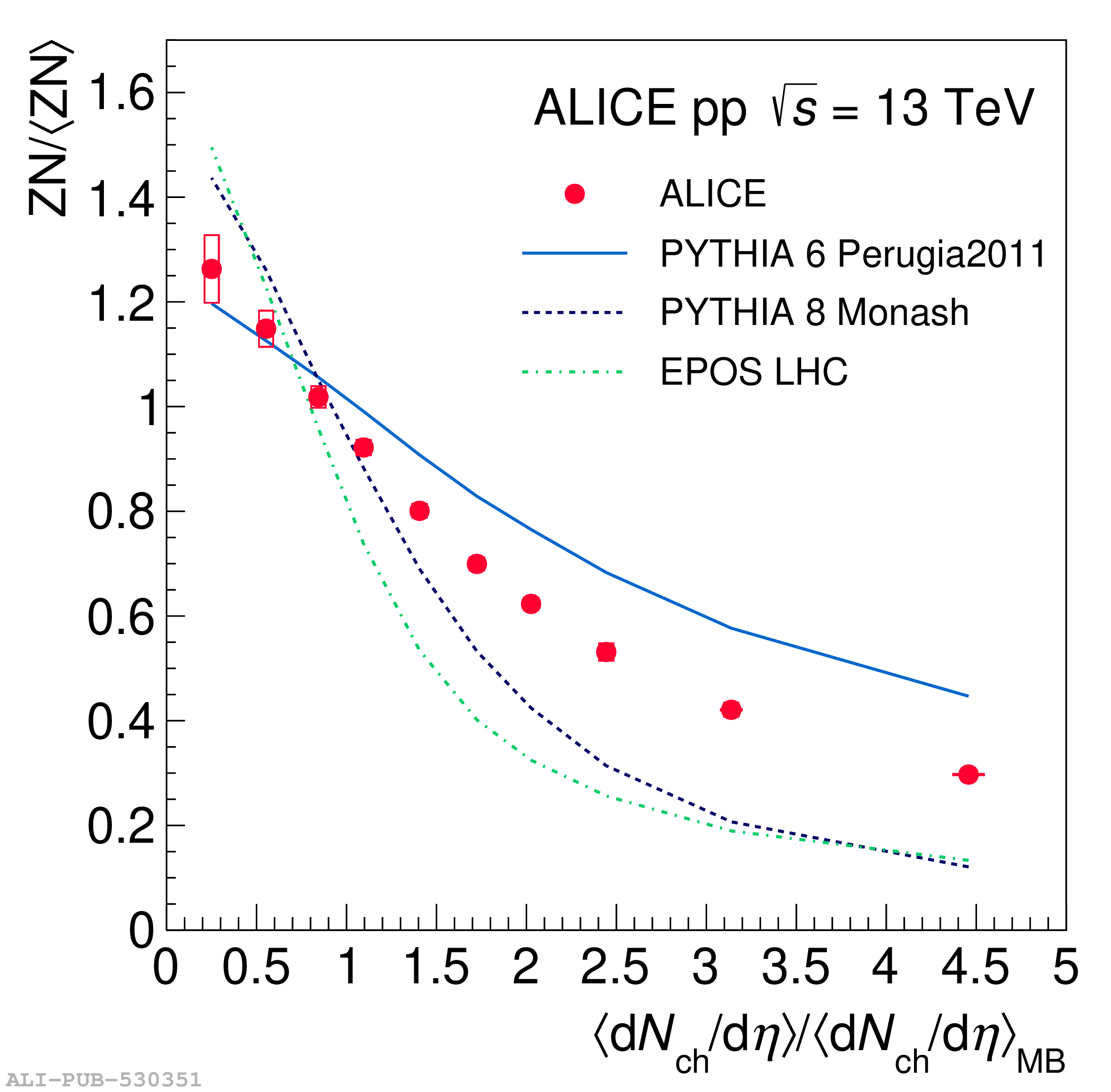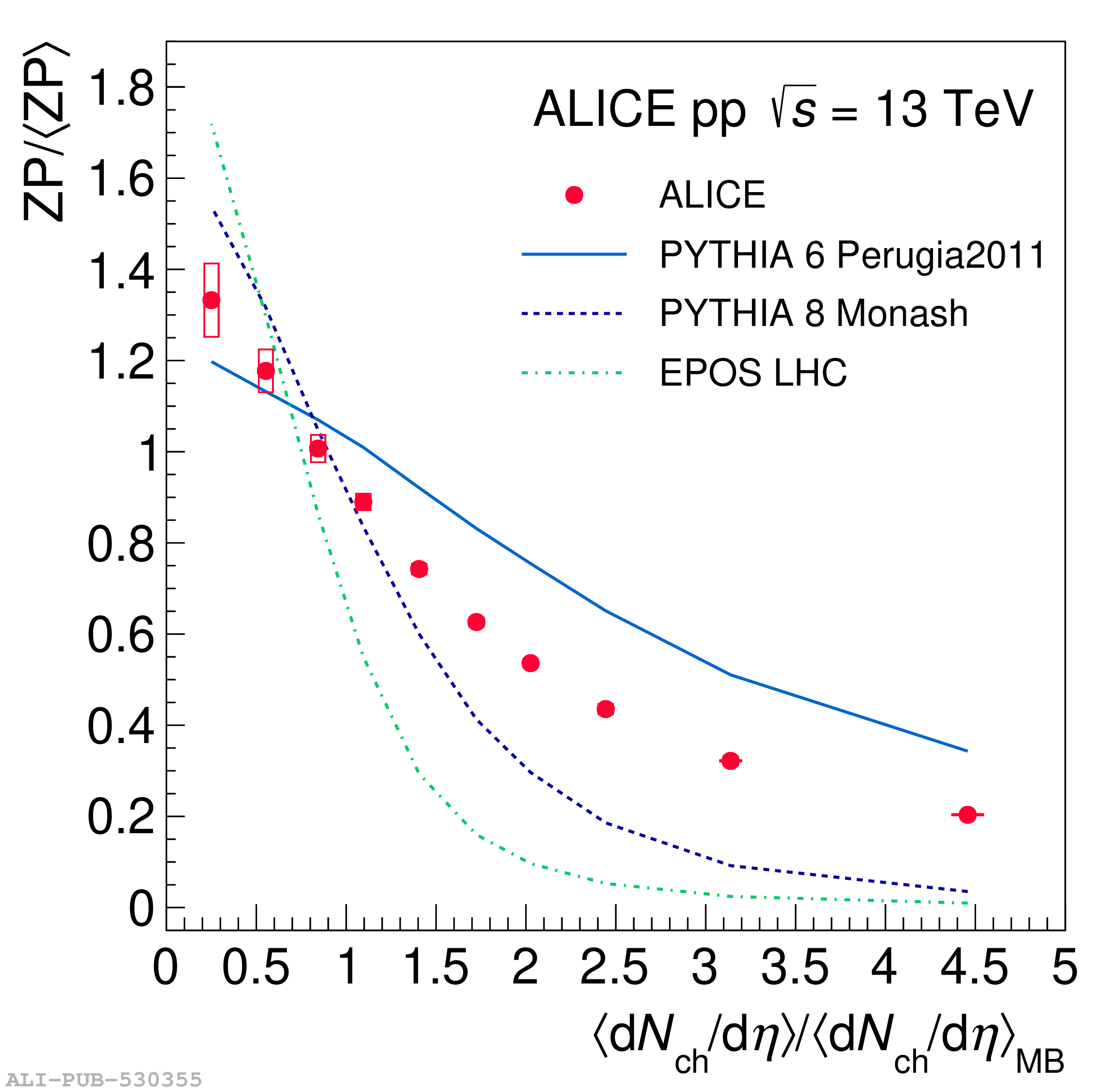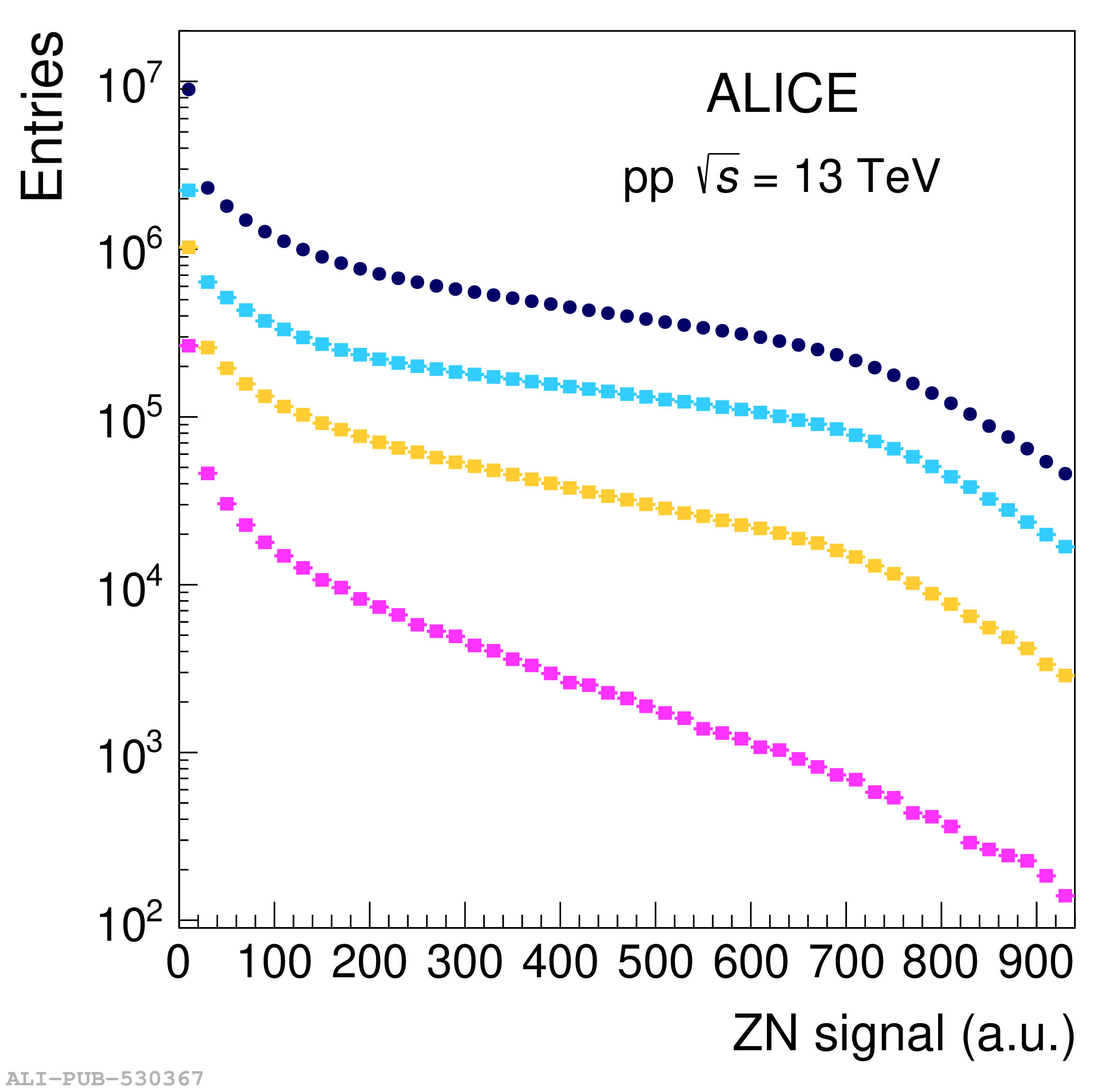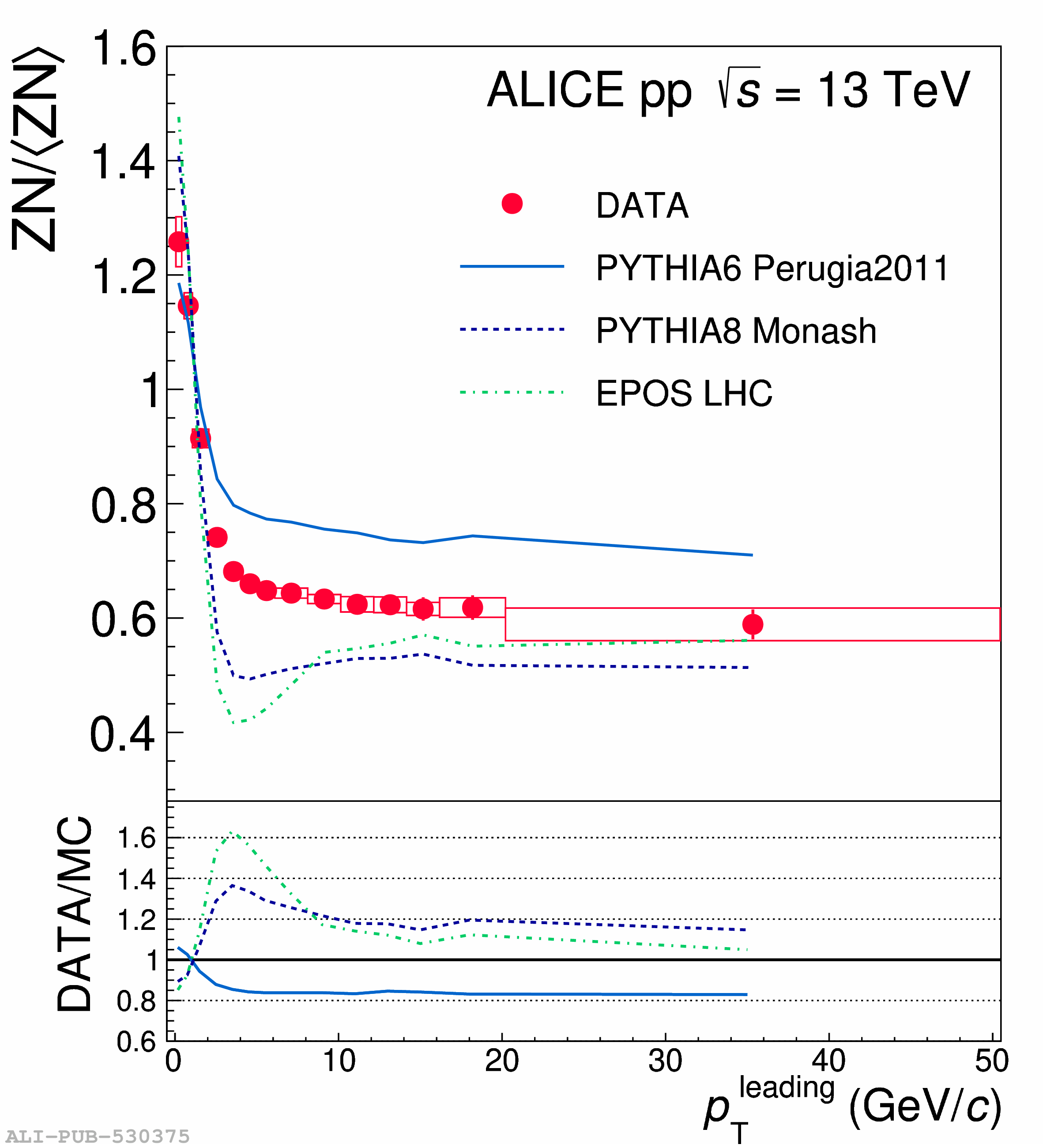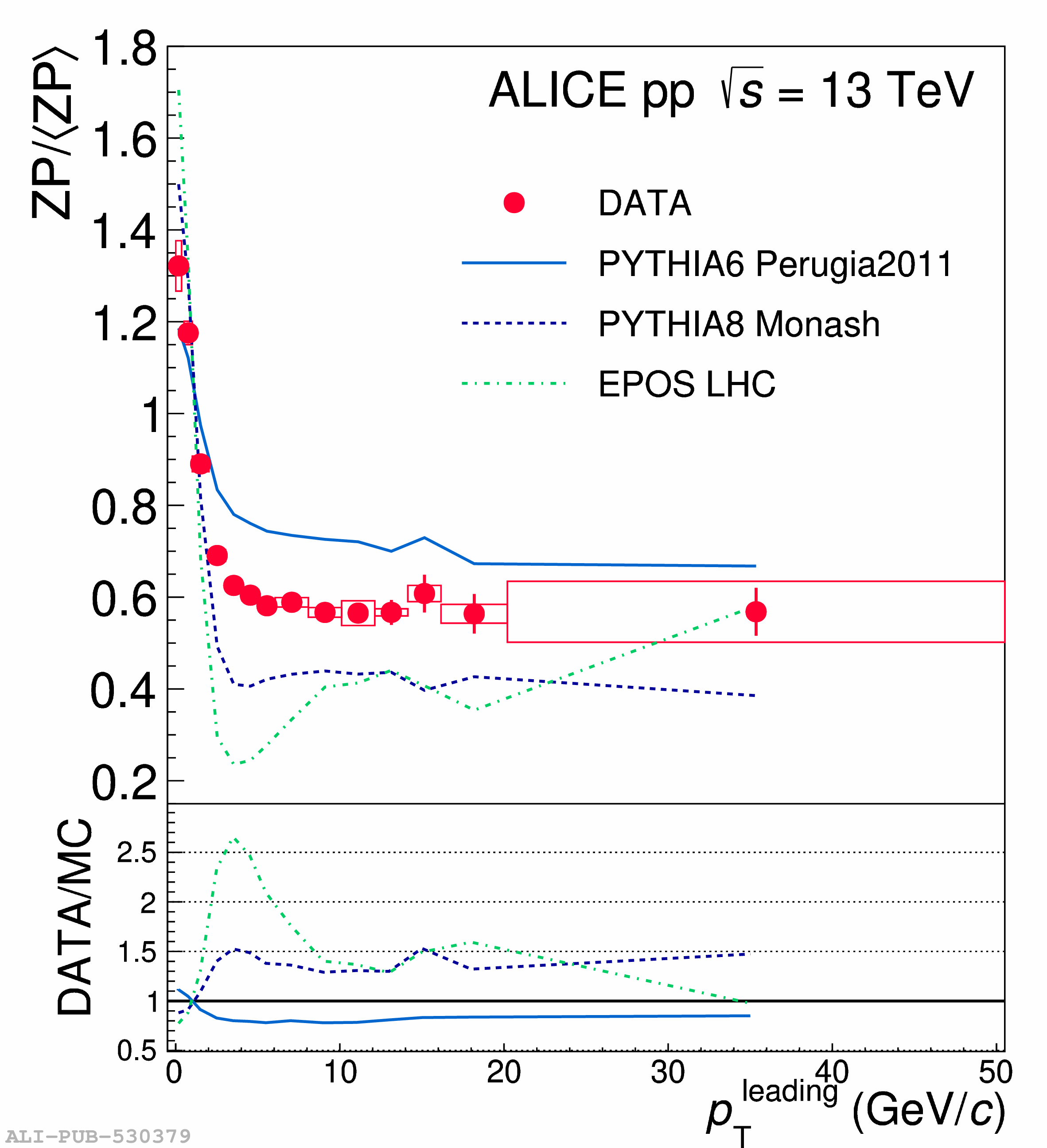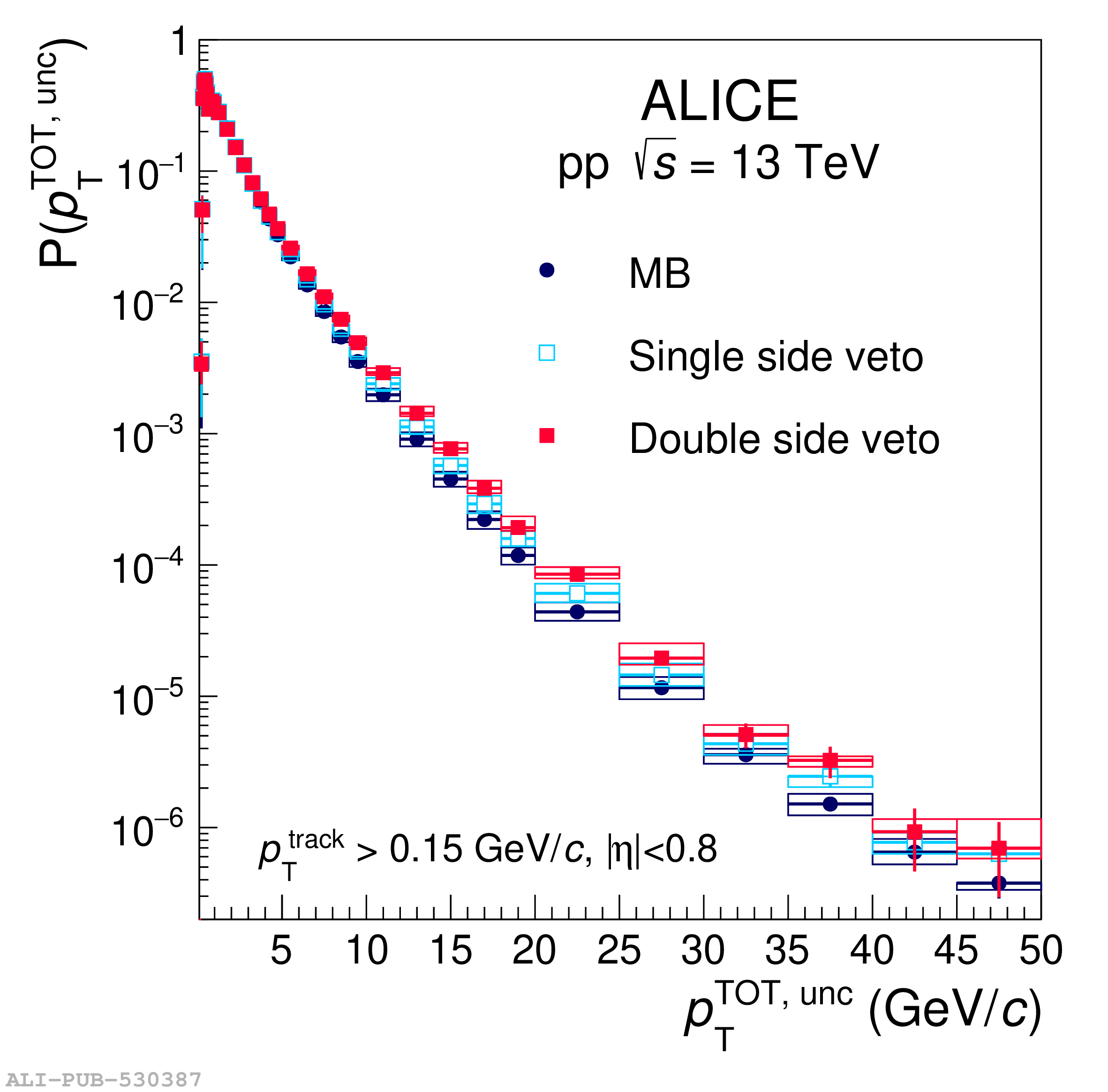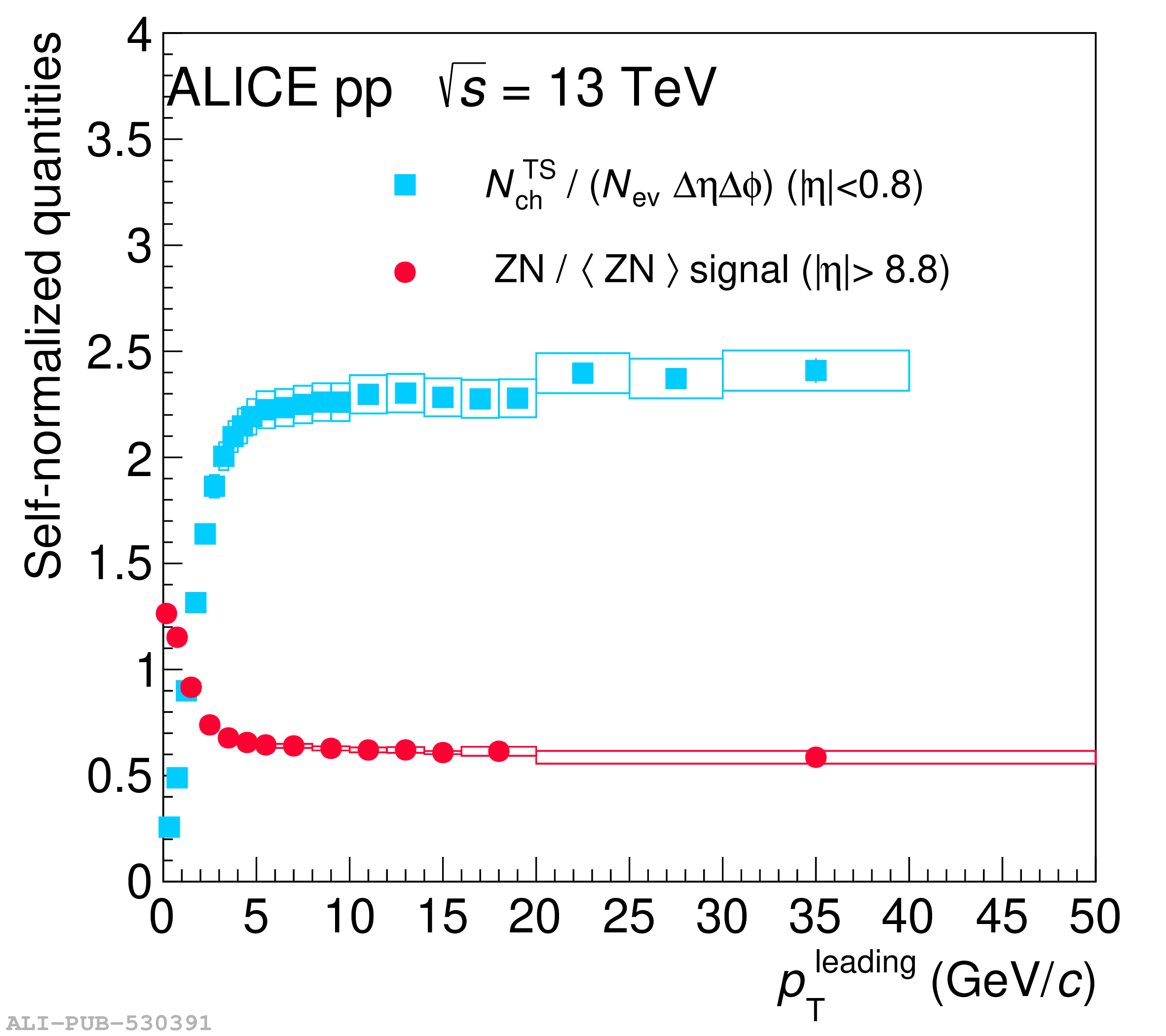The energy deposited at very forward rapidities (very forward energy) is a powerful tool for characterising proton fragmentation in pp and p$-$Pb collisions. The correlation of very forward energy with particle production at midrapidity provides direct insights into the initial stages and the subsequent evolution of the collision. Furthermore, the correlation with the production of particles with large transverse momenta at midrapidity provides information complementary to the measurements of the underlying event, which are usually interpreted in the framework of models implementing centrality-dependent multiple parton interactions. Results about very forward energy, measured by the ALICE zero degree calorimeters (ZDCs), and its dependence on the activity measured at midrapidity in pp collisions at $\sqrt{s}=13$ TeV and in p$-$Pb collisions at $\sqrt{s_{\rm{NN}}}=8.16$ TeV are discussed. The measurements performed in pp collisions are compared with the expectations of three hadronic interaction event generators: PYTHIA 6 (Perugia 2011 tune), PYTHIA 8 (Monash tune), and EPOS LHC. These results provide new constraints on the validity of models in describing the beam remnants at very forward rapidities, where perturbative QCD cannot be used.
JHEP 08 (2022) 086
HEP Data
e-Print: arXiv:2107.10757 | PDF | inSPIRE
CERN-EP-2021-144
Figure group


